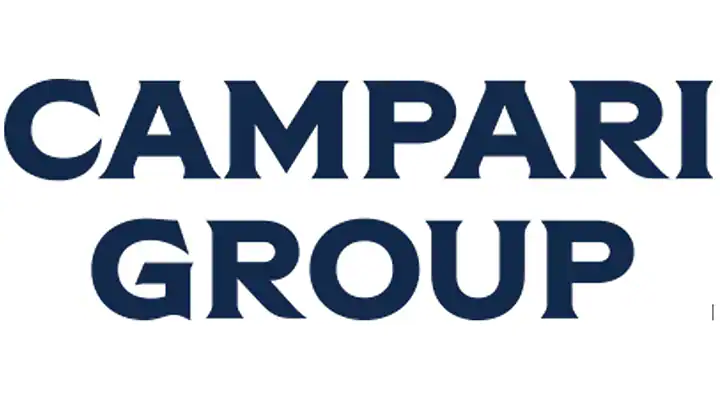About cookies on this site Our websites require some cookies to function properly (required). In addition, other cookies may be used with your consent to analyze site usage, improve the user experience and for advertising. For more information, please review your options. By visiting our website, you agree to our processing of information as described in IBM’sprivacy statement. To provide a smooth navigation, your cookie preferences will be shared across the IBM web domains listed here.
Bringing the “wow” factor to Campari’s Brands through a Digital Factory
Following the IBM Garage approach, global premium spirits company Campari Group gives its brand owners a fast and efficient path to creating great digital experiences

For companies that make and market premium consumer products—those that stand above and apart because they have the elusive “it” factor—cultivating love, passion and loyalty for the brand among customers is paramount. So it’s not surprising that the internal owners of these brands tend to bring an equal measure of passion to their mission of protecting and advocating for their brands every day. In short, they live and breathe it.
At Milan’s Campari Group, home to such renowned beverage brands as Aperol, Campari, SKYY Vodka, Wild Turkey Bourbon, Appleton Estate and Grand Marnier, the marketers behind them have long used brand-specific websites to drive deeper consumer engagement. Whether it’s cocktail recipes or product merchandising, the goal has always been to make brand-loving advocates out of not just consumers, but also the bartenders who serve them.
Within the 23 companies and 60-plus brands that make up Campari’s portfolio—and the agencies that serve them—there’s no shortage of the creativity, energy and drive needed to make these compelling digital experiences. What had been lacking was a common, unified technical and process framework for all of the company’s brand owners to realize their digital visions. Put simply, each brand did things its own way, making broader objectives—such as governance and a uniformly high-quality experience—all but impossible to achieve. And it’s far from uncommon.
Among marketers of premium brands, whose jobs are all about making them stand out in the digital space, the very notion of imposed commonality goes against their cultural grain. It underscores the natural tension that tends to arise between the marketing and IT domains, whose priorities can often seem at odds. But at Campari, it’s a somewhat different story, with marketing and IT bonded by a shared view of how to bring each brand’s uniqueness to the forefront.
As Campari’s Global IT Director of Marketing, Liam Barnes and his lean team play a key role in making it happen. But it hasn’t been easy. “Our job is to make it easier for our brand people to create the kind of engaging, immersive digital experiences that maintain the premium nature of our brands,” he explains. “Because we’ve been so fragmented—with lots of different agencies doing lots of different things—we had little to no visibility or control over how our brands were being represented. We recognized we needed a way to bring back that control, while giving the creative power back to brand owners.”
50% reduction
Reduced the time required to bring new brand websites online by 50% through a modular, building block approach to digital development
20% increase
Increased consumer session times by 20% on websites, driving deeper brand engagement
The idea of creating a centralized entity to govern the creation of digital assets—a kind of development “factory” that spanned marketing and IT—wasn’t new. However, it wasn’t until late 2020 that the need to transform the process reached an inflection point, and stakeholders took action and sent out requests for proposals (RFPs) to a small group of vendors.
In its response, a team from IBM iX®, the experience design arm within IBM Consulting™, made the IBM Garage™ methodology the core of its selling proposition. To Davide Ferraris, an Experience Design Lead for IBM iX and key figure member of the team, the fit between the elements of the Garage methodology and the “digital factory” that Campari was trying to build to facilitate its marketing transformation was nothing short of remarkable. “We were able to map each of the different work streams—from scope framing to co-creation to testing of ideas—directly into the Garage development framework,” says Ferraris. “It showed that with the IBM Garage methodology, we already had the blueprint for what Campari was trying to achieve.”
Today, that vision has been realized, and it’s called the Campari Digital Factory. More than a platform for creating new digital assets, the Digital Factory in fact constitutes a whole new operating model that simplifies and speeds up the process, while at the same time creating an entirely new governance framework to keep quality uniformly high. In addition to designing and implementing all aspects of the new program, a diverse, five-nation team from IBM Consulting is also managing its day-to-day operation in seamless collaboration with Campari’s core stakeholders in IT and marketing.
By design, the technical underpinnings of the solution all support Campari’s vision of efficiency and flexibility. Running on the Microsoft Azure Cloud Platform, it uses Microsoft Azure Red Hat® OpenShift® (ARO) to centrally manage all of Campari’s brand-specific websites. By virtue of its microservices architecture, the platform enabled IBM to design a “building block” approach to creating new capabilities, so they can be designed and developed once and shared across all brands. Likewise, the decision to use containers to consolidate numerous content management platforms into a single framework based on WordPress—an open-source technology—further enhances Campari’s ability to drive both simplicity and quality.
In the big picture, the deployment of these foundational capabilities was a critical part of the program. But to Barnes, the truly transformative essence of the Digital Factory operating model is the highly structured and agile process framework—built on the IBM Garage methodology—that underpins the Factory’s ongoing operation. “By linking together a series of specialized, task-focused work streams, we’ve essentially created a powerful delivery engine,” he says. “It’s a highly efficient means of orchestrating our internal stakeholders and external agencies, and a way to bring the web designs of all our brands into the 21st century.”
Teaming for an excellent digital experience
In the everyday operation of the Campari Digital Factory, work streams and building blocks translate into experienced IBM people creating real digital capabilities, such as “age gates,” cookie banners and language selectors. One squad designs and builds them, one helps brands implement them, and others perform more flexible tasks like fixes and customization. All of them work seamlessly with Campari’s constellation of brand managers toward a common goal. Like a classic industrial factory, it’s about big-time efficiency through coordinated specialization—and, of course, pulling together as a team.
In fact, says Barnes, this shared commitment to creating the best digital experience tends to blur the line between Campari’s brand teams and the Digital Factory’s IBM people. “Instead of a vendor/customer relationship, we see IBM people as an extension of the team. We see people who are fully vested and passionately believe in our brands, and want to do better for our brands,” he says. “Moreover, what IBM brings complements the skills within our own team and really closes the skills and resource gaps we had in our old operating model.”
The broadest benefit of Campari’s new operating model is that it provides a far shorter and more cost-effective pathway for all of the company’s brands to present a truly premium digital experience to their customer base. In other words, while skills and resources may have been barriers before—especially for newer or less mature brands—they’re not anymore.
To Barnes, one key metric reflects the newfound agility that the Digital Factory has brought to Campari’s digital branding efforts. “On average, we’re able to bring new brand websites to market 50% faster than we could before,” he explains. “And as a result of the efficiency the Digital Factory brings, we’re expecting to save more than a million and a half dollars over three years—all while increasing the quality and consistency of our consumers’ experiences across the board.”
Of course, it’s hard to pin down exactly what “quality” means when brand fans—be they consumers, bartenders or both—visit a site. But as Barnes points out, the real acid test of a brand-focused digital experience is how long it keeps visitors engaged, and on that score, the output of the Digital Factory is on a major winning streak. “We’re seeing a more than 20% increase in session times on our brand websites than we had previously from those journeys,” he says. “It means that people are browsing for longer and engaging with more branded content—and that speaks volumes about the quality of the user experience and the performance of the websites.”
With all the performance and efficiency benefits of Campari’s digital modernization, Barnes sees his company as exceptionally well positioned to deliver the kind of pervasively engaging experience that brand-loving customers crave. So, he says, even as tastes, trends and technology continue to change, Campari is ready to adapt to it at speed—and its trusted relationship with IBM is a big reason why. “We know that when we go in head-on with a challenge, we know the IBM people are truly all-in and passionate about getting it done.”
Based in Milan, Davide Campari-Milano N.V. (link resides outside of ibm.com), more commonly known as Campari Group, is one of the world’s largest producers of spirits, wines and non-alcoholic apéritifs. From its core brand, Campari, the company has extended its portfolio to include over 60 brands, including Aperol, Campari, SKYY Vodka, Wild Turkey Bourbon, Appleton Estate and Grand Marnier. Campari Group operates 22 manufacturing plants, employs approximately 4,000 people and has its own distribution network. On LinkedIn, the company’s page can be found at www.linkedin.com/company/campari-group.
Legal
© Copyright IBM Corporation 2023. IBM Corporation, New Orchard Road, Armonk, NY 10504
Produced in the United States of America. July 2023.
IBM, the IBM logo, IBM Consulting, IBM Garage and IBM iX are trademarks or registered trademarks of International Business Machines Corporation, in the United States and/or other countries. Other product and service names might be trademarks of IBM or other companies. A current list of IBM trademarks is available on ibm.com/trademark.
Microsoft, Windows, Windows NT, and the Windows logo are trademarks of Microsoft Corporation in the United States, other countries, or both.
Red Hat®, JBoss®, OpenShift®, Fedora®, Hibernate®, Ansible®, CloudForms®, RHCA®, RHCE®, RHCSA®, Ceph®, and Gluster® are trademarks or registered trademarks of Red Hat, Inc. or its subsidiaries in the United States and other countries.
This document is current as of the initial date of publication and may be changed by IBM at any time. Not all offerings are available in every country in which IBM operates.
All client examples cited or described are presented as illustrations of the manner in which some clients have used IBM products and the results they may have achieved. Actual environmental costs and performance characteristics will vary depending on individual client configurations and conditions. Generally expected results cannot be provided as each client's results will depend entirely on the client's systems and services ordered. THE INFORMATION IN THIS DOCUMENT IS PROVIDED “AS IS” WITHOUT ANY WARRANTY, EXPRESS OR IMPLIED, INCLUDING WITHOUT ANY WARRANTIES OF MERCHANTABILITY, FITNESS FOR A PARTICULAR PURPOSE AND ANY WARRANTY OR CONDITION OF NON-INFRINGEMENT. IBM products are warranted according to the terms and conditions of the agreements under which they are provided.
